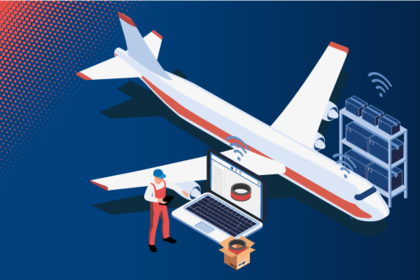QR Codes for Process and Control Optimization
In your daily life, you probably get in touch with QR-codes at your local supermarket, to get necessary information about a product, which reached your interest. Alternatively, you discovered one as a marketing gimmick at an event as a link connected to an exhibitioner’s homepage or on a business card, to exchange contact information. But those „gimmicks“ or product information pages are only the first steps of what can be done with a QR-code.
In your daily life, you probably get in touch with QR-codes at your local supermarket, to get necessary information about a product, which reached your interest. Alternatively, you discovered one as a marketing gimmick at an event as a link connected to an exhibitioner’s homepage or on a business card, to exchange contact information. But those „gimmicks“ or product information pages are only the first steps of what can be done with a QR-code.
In fact, there is no limit to what QR-codes can do.
What exactly is a QR-code?
In general, QR-codes are essentially machine-readable two-dimensional barcodes that give people information about products. Unlike regular barcodes however, the advancement of technology means that QR codes can deliver a whole lot more besides a price tag and sell-by date. Scanning a QR code with a smartphone can directly open up a website where you can find more information about the product or the manufacturer itself. It can be laced with apps that are useful for people, with links to websites, or even help people track their lost items.
Brands can program QR-codes for tracking reasons. A QR-code can let them know when an item is scanned, something that would tell them if there is an increase or decrease of consumer interest in their offerings. Alternatively, QR-codes can be used as a direct connection to companies. For example, scanning would allow consumers to send feedback or get in touch with customer service representative immediately, instead of calling a 1-800 number for complaints. This way, companies can easily address concerns, while consumers will be satisfied that the brand can get back to them so quickly.
(ref.: siliconangle.com)
QR-codes in B2B
Transferring the thoughts from above to the B2B sector, QR-codes can be very useful for process and controlling optimisation. For example, putting a QR-code on a machine can help coordinating and controlling the delivery chain. Scanning the QR-code at each step will help you as manufacturer track the item, as well as tracking down obstacles and problem occurring during the delivery. Getting the chance to optimise the chain as soon as possible.
The QR-code can also be used as a platform to connect buyer, manufacturer and other stakeholders.
In case of maintenance, a QR-code may open a platform including a spare parts catalog, maintenance manual and helpdesk. Helping not only the service technician in charge, but also the manufacturer to provide correct data and exchange information about maintenance inconsistencies. The service technician reduces his effort and increases his efficiency by having all necessary information at one place. Being able to identify the defect part, order it and have access to the manual, the technician can perform autonomously and is less dependent on the support hotline.



